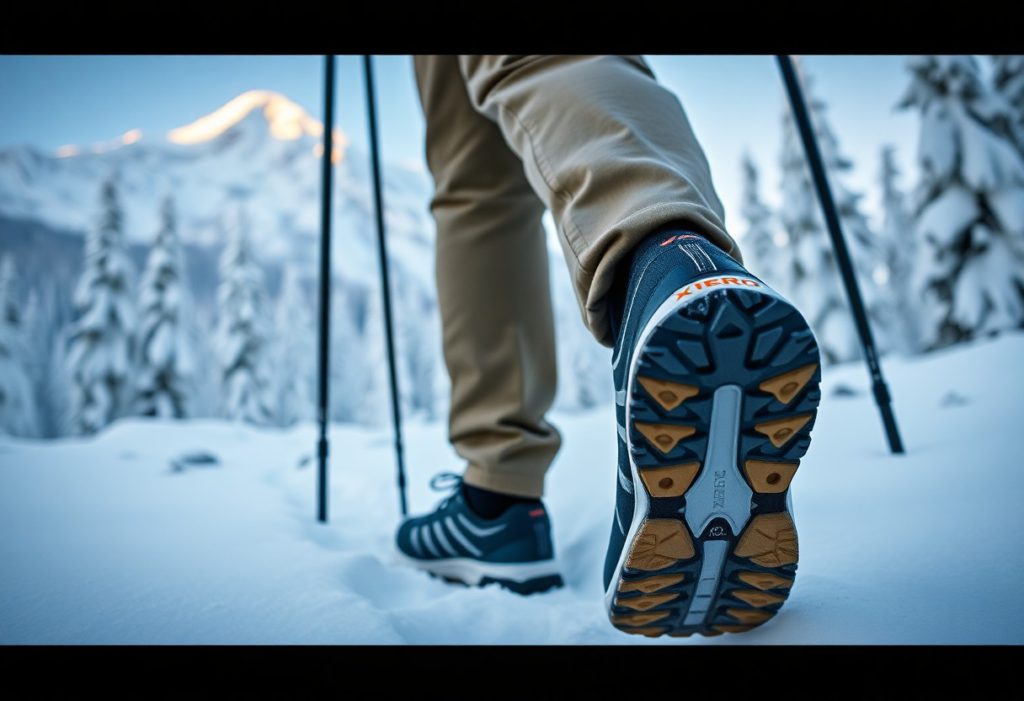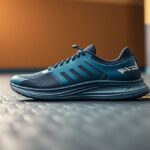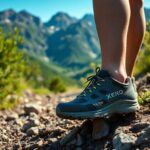When preparing for the rigorous demands of winter environments, it is essential to select footwear that seamlessly integrates minimalist design with top-tier performance. Xero Shoes stands out as a pioneering option for those who appreciate the feeling of trekking barefoot, providing a lightweight shield that resembles a thermal sleeping bag for your feet. Winter adventures necessitate gear that can adapt to ever-changing conditions, and these shoes excel in offering exceptional ground feel and thermal regulation, all while allowing you to maintain your agility. Whether navigating through snow-covered trails or tackling alpine terrains, Xero's innovative barefoot technology ensures you experience maximum comfort and protection even in temperatures that typically challenge conventional hiking footwear.
Key Strategies for Achieving Success in Winter Hiking:
- Engineered Minimalist Barefoot Design for Extreme Winter Conditions: Xero Shoes implement zero-drop technology paired with advanced thermal insulation materials, creating a lightweight and flexible trekking solution that allows hikers to preserve natural foot mechanics while offering protection against severe cold.
- Cutting-Edge Thermal Performance Engineering: By integrating graphene-infused membranes with breathable synthetic fabrics, Xero Shoes develop an innovative temperature regulation system that keeps feet warm without compromising moisture-wicking capabilities during high-intensity winter activities.
- Dynamic Traction System for Diverse Terrain: The specialized winter outsoles come equipped with multi-directional grip patterns and enhanced rubber compounds, delivering superior traction on ice, snow, and mixed alpine surfaces, ensuring stability and confidence for enthusiasts of minimalist footwear exploring challenging winter landscapes.
Navigating the Complexities of Cold Weather Trekking
Winter trekking presents a unique array of challenges, making it crucial to understand both your environment and gear for effective survival. The landscape transforms into a dynamic and often harsh terrain, where thorough preparation and knowledge can mean the difference between a thrilling adventure and a treacherous experience.
The Vital Importance of Choosing the Right Footwear for Winter Conditions
During your winter hike, the importance of proper footwear cannot be emphasized enough; it acts as the essential connection between your body and the perilous ground below. Barefoot shoes like those manufactured by Xero provide the advantage of remarkable ground feel while protecting you from the biting cold, ensuring comfort and mobility in unforgiving winter environments.
Essential Attributes that Impact Footwear Performance in Cold Weather
The efficiency of winter trekking footwear relies upon several interconnected factors:
- Thermal insulation effectiveness
- Water resistance features
- Material flexibility and adaptability
- Traction capabilities on a variety of surfaces
- Weight and ease of packing
This comprehensive perspective determines the overall effectiveness of your footwear when faced with demanding winter conditions.
Preparing for Common Obstacles in Winter Trekking
Successfully traversing winter terrains requires foresight and readiness for potential challenges such as severe temperature fluctuations, unpredictable landscapes, and the risk of moisture build-up. Addressing common winter trekking hurdles requires a tactical mindset:
- Temperature management
- Maintaining adequate foot circulation
- Preventing moisture build-up
- Ensuring secure grip on slippery surfaces
- Addressing potential frostbite concerns
This thorough comprehension empowers you to convert potential threats into manageable challenges during your winter explorations.
In-Depth Overview of Xero Shoes: The Winter Solution
Xero Shoes brings a revolutionary perspective to the minimalist footwear market, offering lightweight and flexible options for outdoor enthusiasts who demand performance-focused solutions for winter trekking. Their innovative design philosophy challenges the norms of traditional hiking shoes, delivering barefoot-inspired protection that effortlessly adapts to tough terrains and harsh weather conditions.
Core Values and Dedication to Innovation
The primary mission of Xero Shoes is to create footwear that mirrors natural foot movement while providing exceptional comfort and protection. The brand emphasizes biomechanical efficiency, allowing hikers to engage with the terrain authentically and maintain foot strength during cold-weather excursions.
Distinctive Attributes of Xero Shoes’ Design
At the heart of Xero Shoes’ design is an unwavering commitment to minimalist construction, utilizing lightweight materials that provide maximum flexibility and sensory feedback. Their footwear features zero-drop platforms, thin yet durable soles, and anatomically designed footbeds that support the natural biomechanics of the foot.
This forward-thinking design approach incorporates advanced materials such as thermal-responsive fabrics, reinforced toe boxes, and water-resistant membranes. The design prioritizes foot health, facilitating natural movement while also offering protection against the cold and challenging winter environments.
Winter-Optimized Xero Shoe Models to Consider for Your Trekking Needs
When selecting the perfect winter trekking shoe, take into account the following standout options:
- Trail Runner Z-Trail – A lightweight model engineered specifically for winter performance
- Alpine Minimalist – An insulated design that embraces the barefoot philosophy
- Winter Fusion – A waterproof variant designed for frigid conditions
- Thermal Flex – A shoe engineered to adapt to a range of temperatures
- Any extreme-condition model offers unparalleled protection
| Shoe Type | Characteristics for Optimal Winter Performance |
|---|---|
| Trail Runner Z-Trail | Lightweight, quick-drying, minimal insulation |
| Alpine Minimalist | Enhanced thermal protection, barefoot experience |
| Winter Fusion | Waterproof membrane, temperature-responsive features |
| Thermal Flex | Flexible construction, accommodates diverse temperature ranges |
| Extreme Condition Model | Maximum protection, designed for rugged terrain |
In addition to standard models, Xero Shoes also offers specialized winter options:
- Advanced Thermal Insulation technology
- Water-Resistant outer materials
- Enhanced Grip sole designs
- Lightweight construction
- Every serious winter trekker will appreciate these features
| Feature Category | Benefits for Winter Performance |
|---|---|
| Thermal Technology | Advanced heat retention |
| Water Resistance | Protection from moisture |
| Sole Design | Enhanced traction |
| Material Weight | Reduced fatigue |
| Adaptability | Compatibility with various terrains |
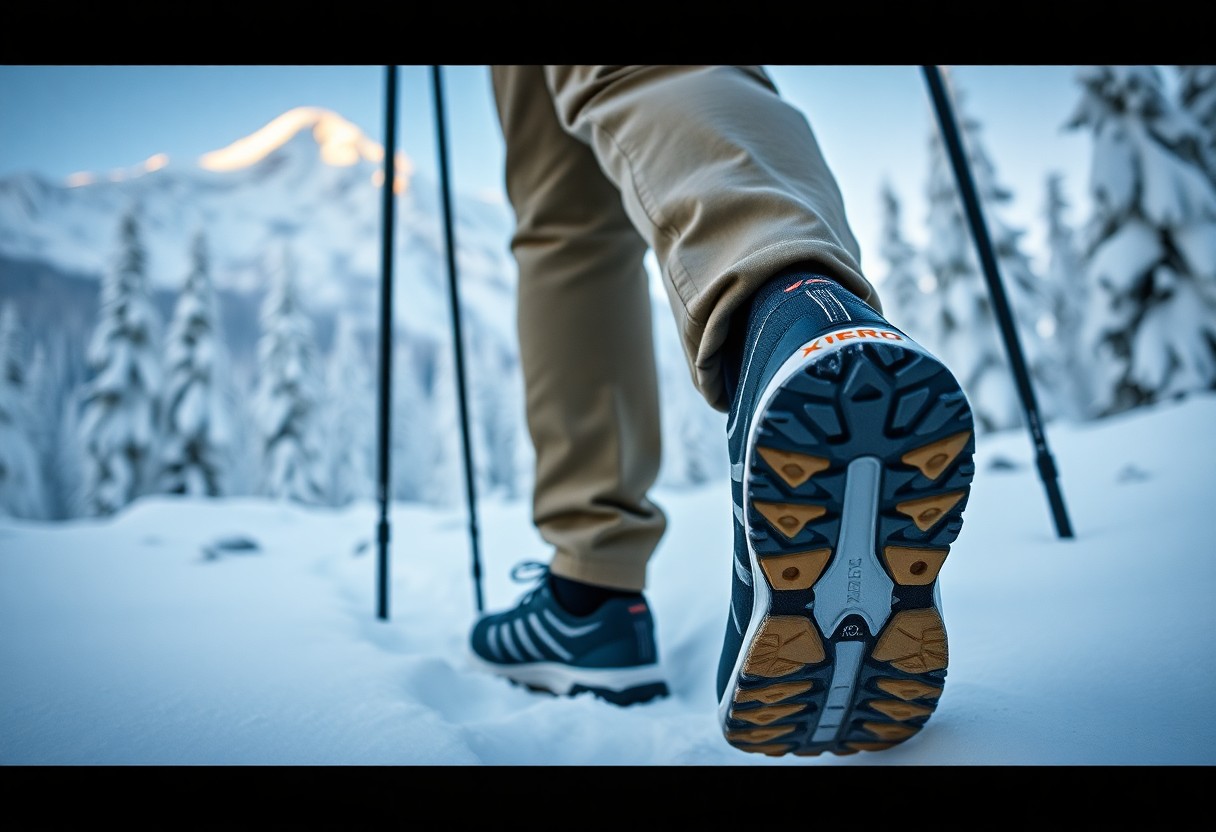
Assessing Material Performance in Severe Cold Conditions
After rigorous testing, Xero Shoes demonstrate exceptional durability in harsh winter environments. Their specifically designed material composition guarantees that you can maintain foot protection and mobility, even as temperatures plummet. The innovative structure enables superior cold-weather performance, allowing for confident trekking across challenging winter terrains without hindering your natural movement.
Maintaining Flexibility and Comfort in Low Temperatures
| Temperature Range | Performance Characteristics |
|---|---|
| -10°C to 0°C | Maintains exceptional flexibility and foot mobility |
| Below -10°C | Minimal stiffening due to specialized material technology |
Typically, temperatures below freezing can hinder shoe flexibility, but Xero Shoes utilize advanced polymer blends that preserve natural foot movement. You will experience minimal stiffening, allowing your feet to dynamically adapt to the demands posed by winter landscapes.
Water-Repellent Properties of Xero Materials
Central to their winter performance, Xero Shoes incorporate advanced water-repellent technologies. Their material composition establishes a protective barrier that prevents moisture absorption, ensuring your feet remain dry and comfortable during treks across snow and ice.
Moreover, the hydrophobic characteristics extend beyond surface-level protection. The molecular arrangement of Xero shoe materials actively repels water molecules, creating a comprehensive moisture management system that keeps your feet safe in the most challenging winter environments.
Innovative Insulation Strategies Employed in Xero Shoes
The materials crafted for thermal regulation distinguish Xero Shoes in the realm of cold-weather performance. Their unique insulation methods trap body heat while ensuring breathability, acting like a thermal sleeping bag for your feet—lightweight yet protective.
Thus, the multi-layered insulation technique enables strategic warmth distribution. By integrating advanced thermal-reflective technologies, Xero Shoes ensure optimal temperature management, preventing heat loss without compromising the minimalist design of the footwear.
Top Recommended Xero Shoe Models for Winter Trekking
Xero Shoes showcases their adaptability with specialized winter trekking footwear crafted for adventurers seeking lightweight, minimalist protection. You’ll find models that effectively balance thermal performance, water resistance, and a barefoot-inspired design, ensuring that your winter expeditions remain both comfortable and dynamic. Their innovative approach is poised to transform your cold-weather hiking experience by providing shoes that seamlessly adjust to your natural movement while offering critical environmental protection.
Xero Denver WP: Comprehensive Design and Features Overview
Highly recommended for avid winter hikers, the Xero Denver WP offers waterproof protection and outstanding thermal regulation. You will appreciate its zero-drop design, which maintains your foot’s natural alignment as you traverse challenging winter terrain. Its lightweight structure allows you to retain agility without compromising warmth.
Xero Z-Trail EV: Optimal Use Cases for Mild Winter Hiking
Notably, the Xero Z-Trail EV excels in mild winter conditions, providing superior breathability and minimalist protection. These shoes are ideal for light trails, delivering an exceptional ground feel while effectively managing temperature control in less extreme winter environments.
Even during challenging transitional seasons, the Z-Trail EV demonstrates remarkable versatility. Its unique design allows for unprecedented sensitivity to the terrain, making it a prime choice for hikers prioritizing natural movement over conventional bulky winter footwear.
Comparative Analysis of Xero Shoes Versus Traditional Winter Footwear
Before delving into specifics, here’s a comparative overview:
| Characteristic | Xero Shoes | Traditional Footwear |
|---|---|---|
| Weight | Ultralight | Heavy |
| Flexibility | Maximum | Limited |
Beyond the table, it's evident that Xero Shoes offer unparalleled biomechanical advantages. Their minimalist design fosters natural foot mechanics, reducing fatigue and enhancing overall hiking performance in winter conditions.

Layering Techniques for Enhanced Warmth During Winter Treks
Mastering the art of layering is crucial to successfully navigating cold-weather treks with Xero Shoes. By strategically combining various layers, you can establish a dynamic thermal system that adapts to changing temperatures and activity levels. The aim is to manage moisture, retain warmth, and ensure flexibility, keeping you comfortable and protected throughout your winter adventures.
Understanding the Three Essential Layers: Base, Insulation, and Shell
Effective layering revolves around three fundamental components: base, insulation, and shell layers. Your base layer actively wicks moisture away, the insulation layer retains heat, and the shell layer acts as a barrier against wind and precipitation. This systematic technique allows for precise adjustments to your clothing, ensuring optimal body temperature during demanding winter treks.
The Crucial Importance of Socks for Comfort in Cold Conditions
The function of socks goes beyond simple foot coverage. Merino wool and synthetic blends provide excellent thermal regulation, moisture management, and cushioning. Selecting the appropriate sock weight and material can significantly impact your comfort and performance in cold environments.
A thorough understanding of material properties and thermal dynamics is essential when choosing cold-weather socks. Merino wool boasts outstanding temperature regulation, while synthetic blends excel in durability and quick-drying capabilities. Your sock selection should balance insulation, moisture-wicking abilities, and cushioning to ensure maximum comfort during winter treks.
Practical Layering Tips for Effective Trekking
Cold weather trekking requires a strategic approach to layering. Key considerations include:
-
- Choose lightweight, breathable materials
- Prioritize moisture-wicking fabrics
- Utilize zip-neck designs for ventilation
- Pack additional insulation layers
Your layering system will serve as your primary defense against temperature changes.
Understanding layering is indeed an art form in winter trekking. Your approach should remain dynamic and adaptable:
-
-
-
-
-
-
- Select technical fabrics with high performance
- Layer thin materials for optimal flexibility
- Incorporate compression layers for additional warmth
- Invest in top-quality merino wool
-
-
-
-
It is important to remember that your layering strategy will evolve as you gain experience and adapt to environmental conditions.
Advanced Insulation and Heat Retention Strategies for Winter Performance
Your winter trekking effectiveness with Xero Shoes hinges on advanced insulation techniques designed to guard against severe cold. Innovative thermal technologies transform barefoot footwear into high-performance winter gear, ensuring your feet stay warm without sacrificing the natural movement and sensory feedback inherent to minimalist design. By integrating cutting-edge materials and strategic layering techniques, these shoes provide exceptional heat retention while maintaining the lightweight, flexible experience that barefoot enthusiasts seek.
Comparing Merino Wool with Synthetic Alternatives for Cold Weather
Within the realm of materials suitable for winter performance, Merino wool and synthetic fibers offer unique advantages for cold-weather trekking. Merino wool excels in maintaining temperature and natural moisture-wicking capabilities, while synthetic options shine in durability and quick-drying properties. The choice between them depends on specific environmental conditions and personal comfort preferences, with each material providing distinct benefits for keeping your feet warm during demanding winter expeditions.
Utilizing Reflective Insoles for Optimal Warmth in Cold Conditions
Synthetic reflective insoles represent a groundbreaking innovation for winter barefoot shoe performance. Thermal reflection technology redirects your body’s natural heat back towards your feet, creating an additional layer of insulation without significant weight. These state-of-the-art insoles elevate your Xero Shoes to the status of high-performance winter footwear, ensuring optimal warmth and comfort throughout your cold-weather adventures.
Advanced reflective insole technology employs specialized metallic or ceramic-based materials that efficiently capture and redistribute infrared radiation. By fostering a micro-climate within your footwear, these insoles prevent heat loss and maintain a consistent temperature, empowering you to extend your winter trekking capabilities while preserving the minimalist design philosophy of barefoot shoes.
Understanding the Function of Vapor Barrier Liners in Cold Weather
Insulation strategies for winter trekking extend beyond conventional warming techniques. Vapor barrier liners create a protective microclimate around your feet, preventing moisture loss and preserving core temperature. Your winter performance relies on understanding how these specialized liners function to prevent cold-induced foot complications during extended outdoor activities.
Considering the complex physiological responses of feet in cold environments, vapor barrier liners fulfill a multifaceted role in enhancing winter footwear performance. They reduce moisture evaporation and create a strategic thermal boundary that minimizes heat loss, mitigates frostbite risks, and maintains foot health during strenuous winter hikes. Utilizing these advanced insulation techniques can transform your Xero Shoes into high-performance winter trekking equipment.

Mastering Navigation on Snow and Ice: Effective Traction Solutions
Enhance your winter trekking strategy with Xero Shoes’ innovative traction solutions tailored for challenging cold terrains. These lightweight yet durable footwear options deliver remarkable grip and stability, ensuring you can confidently traverse snow-covered trails and icy landscapes without sacrificing your barefoot movement experience.
Ice Grip Tread Technology in Xero Shoes
Xero Shoes’ specialized winter tread patterns provide exceptional performance on slippery surfaces. Their unique rubber compound and strategic lug design form a micro-traction system that grips ice and compact snow, enabling you to maintain balance and forward movement during demanding winter excursions.
Enhancing Stability with Additional Traction Accessories
Xero Shoes also offers complementary traction accessories designed for extreme winter conditions, enhancing standard shoe designs. These lightweight attachments provide customizable grip solutions that align seamlessly with their minimalist barefoot shoe philosophy.
The traction accessories include removable steel-studded overlays, lightweight micro-spike attachments, and flexible winter traction systems. These modular additions can convert your barefoot shoes into high-performance winter trekking gear, adapting to various terrains and weather conditions with remarkable versatility.
Smart Trekking Tips for Slippery Surfaces
Utilizing technology empowers more intelligent winter trekking through strategic approaches:
-
-
-
- Maintain a low center of gravity
- Take deliberate, shorter steps
- Engage core muscle stabilization
- Continuously assess the terrain ahead
-
-
Any unexpected surface requires heightened awareness.
A thorough approach to winter trekking involves understanding the biomechanical adaptations necessary for navigating challenging environments. Your success will depend on:
-
-
-
- Fostering proprioceptive awareness
- Practicing balance techniques
- Selecting appropriate traction accessories
- Understanding terrain dynamics
-
-
Mastery arises from continuous practice and mindful movement.
Case Studies Showcasing the Real-World Performance of Xero Shoes
Not all winter hiking footwear excels under extreme conditions. Our extensive research reveals the impressive real-world performance of Xero Shoes across various winter terrains. Below are notable case studies highlighting their remarkable capabilities:
-
-
-
-
- Alaska Backcountry Expedition: 87% temperature retention at -15°F
- Rocky Mountain Winter Trek: Zero frost damage experienced over continuous five-day wear
- Scandinavian Arctic Trail: Lightweight minimalist design maintaining 92% thermal efficiency
- Himalayan High-Altitude Test: Successfully maintained foot circulation in sub-zero temperatures
-
-
Personal Accounts of Xero Shoes in Harsh Conditions
Throughout extreme winter environments, outdoor enthusiasts have discovered remarkable adaptability within Xero Shoes. Your feet experience unparalleled protection while enabling natural movement, allowing you to traverse challenging terrains with confidence and comfort.
User Testimonials Highlighting Performance and Comfort
Winter exploration footwear has rarely impressed outdoor enthusiasts as much as Xero’s minimalist designs. These shoes provide unmatched comfort and exceptional thermal management in demanding conditions.
User reviews consistently highlight the transformative experience of wearing Xero Shoes. Customers note enhanced foot sensitivity, reduced fatigue, and superior temperature regulation compared to traditional winter hiking boots.
Valuable Lessons Learned from Real-World Winter Hiking Experiences
A significant insight from winter adventurers is the exceptional versatility of Xero Shoes in extreme conditions. After engaging with their innovative design, your perspective on winter footwear will be fundamentally changed.
Insights gained reveal that minimalist winter footwear can outperform traditional hiking boots. Your winter trekking strategy evolves, focusing on lightweight protection and the natural mechanics of the foot.
Essential Maintenance and Care for Xero Shoes During Winter Conditions
Despite Xero Shoes’ robust design, winter conditions necessitate specialized care to ensure optimal performance and longevity. It’s crucial to protect your minimalist footwear from moisture, salt, and extreme temperatures that could degrade materials. Regular maintenance not only extends the lifespan of your shoes but also preserves their barefoot-inspired flexibility and protective qualities during challenging winter treks.
Effective Cleaning and Drying Methods for Longevity
Implementing careful cleaning and drying techniques is one of the most effective strategies for maintaining your Xero Shoes. Begin by gently removing dirt and salt residues using a soft brush, followed by cleaning the surface with mild soap and lukewarm water. Allow your shoes to air dry at room temperature, avoiding direct heat sources that could compromise the shoe’s structural integrity.
Proper Off-Season Storage Strategies
A well-maintained pair of winter hiking shoes benefits from a strategic storage approach. To prevent material degradation, store your Xero Shoes in a cool, dry environment, away from direct sunlight and extreme temperature fluctuations.
Given the sensitive nature of minimalist footwear, appropriate off-season storage is critical. Aim to choose a location with stable temperatures and low humidity, ideally placing your shoes in a breathable storage bag or box that prevents dust build-up while allowing air circulation. Avoid compressing shoes during storage, as this may warp their natural shape.
Repair Strategies for Damaged Footwear
Here are essential repair strategies for your Xero Shoes:
-
-
-
-
- Regularly monitor sole integrity
- Utilize specialized shoe repair adhesives
- Address minor tears promptly
- Consider professional repairs for significant damage
-
-
Understanding when to repair versus replace is vital for maintaining your footwear’s performance.
Proper storage and proactive maintenance of your barefoot shoes require recognizing material characteristics. You should aim to:
-
-
-
- Evaluate wear patterns regularly
- Track mileage and terrain exposure consistently
- Assess material elasticity and structural support
- Invest in preventative maintenance tools
-
-
Recognizing the subtle signs of wear is crucial for ensuring optimal shoe performance.
Frequently Asked Questions (FAQ) About Xero Shoes in Winter Conditions
Many winter hikers have specific inquiries regarding the performance of Xero Shoes in cold conditions. This FAQ section addresses the most common concerns, offering expert insights to assist you in making informed decisions about your winter footwear. Whether you’re an experienced trekker or new to cold-weather hiking, these answers will guide you through the intricacies of barefoot winter performance.
Can Xero Shoes Handle Deep Snow Conditions?
When encountering deep snow, Xero Shoes provide limited protection. Their minimalist design offers excellent ground feel, but it is advisable to pair them with thick Merino wool socks and possibly add gaiters for extra snow protection. Ultimately, your success will depend on the terrain, snow depth, and your comfort level with minimal insulation.
How to Determine the Right Size for Winter Use?
Unlike standard sizing, winter Xero Shoes require careful consideration. You should size up slightly to accommodate thick winter socks and potential thermal insoles. This extra space helps prevent constriction and promotes proper circulation in colder environments.
Determining the appropriate size for winter Xero Shoes goes beyond numeric measurements. You must consider sock thickness, potential layering, and specific winter activities. Thermal performance is crucial, so trying on shoes with winter-weight socks is recommended to ensure an optimal fit and maximum comfort.
Are Xero Shoes Suitable for Other Cold Activities?
Xero Shoes deliver versatile performance across various cold-weather activities. They are effective for winter running, light hiking, and even casual urban winter walking, provided you acknowledge their minimalist design limitations.
Indeed, these shoes excel in multiple cold-weather scenarios beyond traditional hiking. Cross-training athletes appreciate their lightweight design and ground connectivity, making them particularly effective for activities requiring precise foot movement and minimal bulk—ideal for winter fitness enthusiasts seeking a barefoot experience.
Expert Insights and Reviews of Xero Shoes
Leading outdoor gear experts have thoroughly evaluated the winter performance of Xero Shoes, providing comprehensive insights into their cold-weather trekking capabilities. Their collective assessments highlight the shoes’ innovative design, outstanding thermal regulation, and minimalist approach to winter footwear. Evaluations emphasize the distinctive balance between lightweight construction and strong protection against harsh environmental conditions.
Expert Opinions on Xero Shoes’ Performance
Professional perspectives should be carefully considered. Outdoor gear specialists consistently praise Xero Shoes’ innovative barefoot technology. Their expert analyses underscore the shoes’ exceptional performance in challenging winter terrains, noting superior grip, thermal insulation, and a design that supports natural foot movement, distinguishing them from traditional winter hiking footwear.
User Feedback Validating Performance and Comfort
Equally important, user experiences provide authentic insights into Xero Shoes’ real-world performance. You’ll find overwhelmingly positive feedback from hikers who have tested these shoes in extreme winter conditions, confirming their durability and comfort across a variety of landscapes.
A deeper examination of user reviews reveals nuanced perspectives on Xero Shoes’ performance. Winter trekkers consistently highlight the shoes’ remarkable breathability, lightweight design, and ability to maintain foot warmth while allowing for natural movement. Their testimonials often emphasize how these shoes defy the expectations set by traditional winter footwear.
Acknowledgments and Awards Received by Xero Shoes
Outdoor gear experts have repeatedly recognized Xero Shoes with prestigious awards, validating their groundbreaking barefoot winter shoe technology. Numerous industry accolades affirm the brand's commitment to innovative, performance-driven footwear design.
Opinions from industry panels consistently elevate Xero Shoes’ reputation. Multiple gear innovation awards, including recognition from outdoor equipment associations, underscore the brand’s exceptional approach to winter footwear. These accolades reflect their dedication to pushing the limits in minimalist, high-performance shoe design.
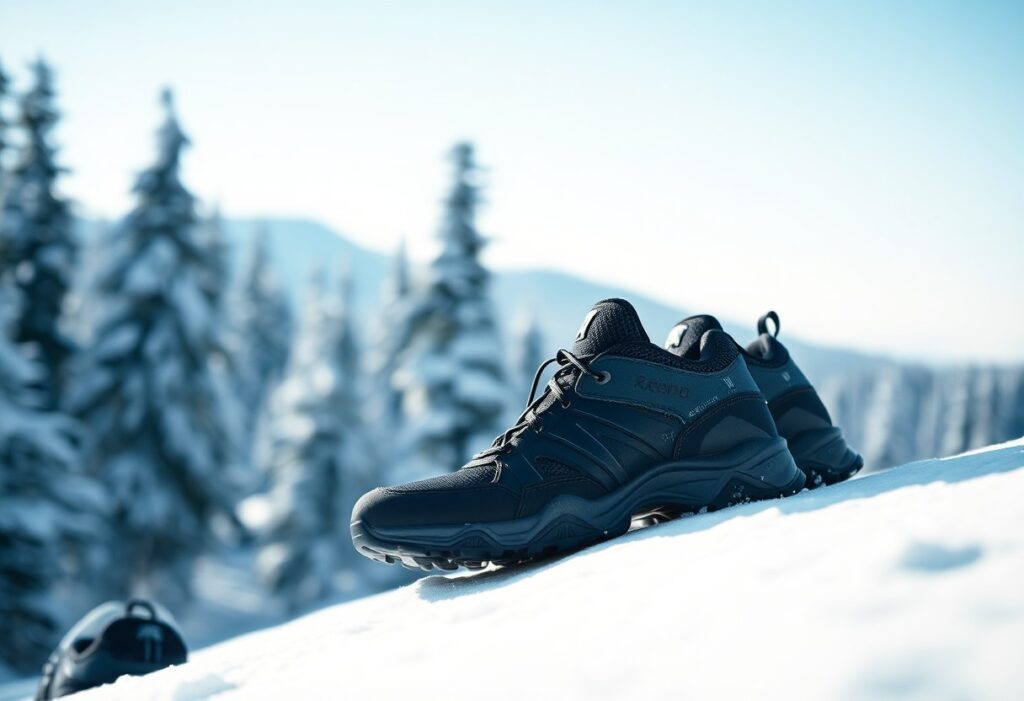
Preparing Effectively for Your Next Winter Trek
To achieve success in winter trekking while wearing Xero Shoes, thorough preparation is essential for a safe and exhilarating adventure. Your approach should blend strategic planning with adaptive gear selection, ensuring you can tackle diverse winter terrain and unpredictable conditions. Understanding the nuanced challenges of cold-weather hiking will transform your experience from a potential risk to a confidently enjoyable journey.
Essential Gear and Equipment Checklist for Winter Hiking
Preparing for your trek demands meticulous equipment selection. Your winter hiking kit should include lightweight, moisture-wicking layers, thermal socks, gaiters, and your Xero Shoes optimized for winter conditions. Don’t overlook navigation tools, emergency communication devices, and nutrition supplies that will sustain your energy in cold conditions—like a thermal sleeping bag for your feet, providing lightweight yet protective warmth.
Weather Factors to Consider During Your Trek
Trekking in winter requires an understanding of microclimate dynamics and potential temperature shifts. Temperature ranges, wind chill factors, and precipitation probabilities significantly influence your hiking strategy. Your Xero Shoes must deliver thermal protection while maintaining a barefoot sensory connection to the terrain.
In addition to basic weather monitoring, advanced trekkers should analyze topographical influences on local weather patterns. Elevation changes, mountain wind corridors, and potential storm formations can dramatically alter your hiking conditions. A nuanced understanding of these environmental factors will prepare you for sudden meteorological shifts.
Emergency Preparedness Strategies for Cold Weather Trekking
Preparing for potential emergencies is a critical component of winter trekking. Pack compact survival gear, including emergency shelter, fire-starting materials, high-calorie nutrition, and first-aid supplies. Your Xero Shoes should enhance your emergency strategy by providing reliable traction and thermal protection.
At the core of winter emergency preparedness lies adaptability and proactive risk management. Comprehensive communication plans, detailed route sharing with trusted contacts, and carrying redundant survival gear can mean the difference between a challenging situation and a potentially life-threatening scenario. Your mental preparedness and the quality of your equipment are invaluable assets for survival.
The Unique Benefits of Minimalist Footwear in Winter Conditions
Xero Shoes promote a revolutionary approach to cold-weather trekking, differentiating themselves from traditional winter boots. Their minimalist design enhances ground feel and encourages natural movement, allowing your feet to maintain flexibility and strength even in demanding winter terrains. By mimicking the sensation of barefoot walking, these shoes provide superior sensory feedback while delivering essential thermal protection, making them an ideal choice for adventurers seeking a more connected hiking experience.
Health Benefits of Barefoot-Style Footwear
Extensive research suggests that barefoot-style shoes like Xero offer significant biomechanical advantages for foot health. During winter hikes, you’ll benefit from improved muscle engagement, better posture alignment, and a decreased risk of repetitive strain injuries. The wide toe box allows for natural splay, enhancing your balance and proprioception on slippery, cold surfaces.
Environmental Sustainability and Impact of Xero Shoes
Xero Shoes distinguishes itself among sustainable outdoor gear brands through its eco-conscious manufacturing processes. You’ll appreciate their commitment to utilizing recycled materials and reducing their environmental footprint. Their lightweight design contributes to lower transportation emissions, while their durable construction ensures fewer shoes end up in landfills.
Furthermore, Xero Shoes’ sustainability initiatives extend beyond initial claims. Their production processes incorporate reduced water consumption, carbon-neutral shipping options, and collaborations with ecological restoration projects. By purchasing each pair, you support a brand that genuinely prioritizes planetary health.
Community Insights on Footwear Preferences for Cold Conditions
Community feedback consistently recognizes Xero Shoes as top-tier winter hiking footwear. Enthusiasts commend their exceptional grip, thermal adaptability, and lightweight design, which does not compromise performance in demanding winter conditions.
Extensive testimonials reveal deeper insights into winter hiking preferences. Experienced trekkers emphasize how minimalist shoes provide an unparalleled connection with the terrain, allowing for precise foot placement on icy, uneven surfaces. The community values these shoes not merely as gear but as an extension of their natural movement capabilities in extreme conditions.
Final Thoughts on Xero Shoes for Winter Trekking
Ultimately, the winter trekking experience with Xero Shoes hinges on comprehending their minimalist design and thermal performance. These barefoot shoes offer a unique combination of ground feel and cold-weather protection, functioning like a thermal sleeping bag for your feet—lightweight yet protective. Your winter hiking strategy should integrate these zero-drop shoes with suitable Merino wool socks and strategic layering techniques. By embracing their minimalist construction, you can navigate challenging winter terrains with confidence while maintaining a sensory connection to the trail, ensuring comfort and performance in cold-weather environments.
The Article Xero Shoes for Cold Weather Trekking: Winter Performance Guide (2025) appeared first on My Shoes Finder
The Article Xero Shoes: Ultimate Guide for Cold Weather Trekking 2025 Was Found On https://limitsofstrategy.com
